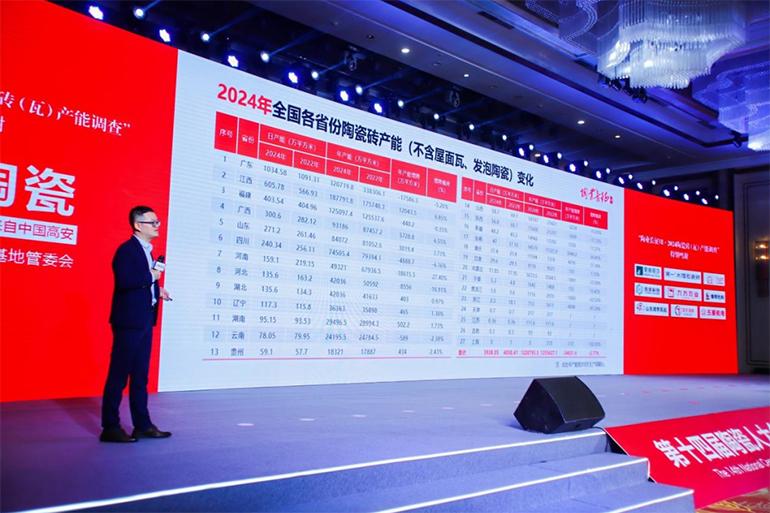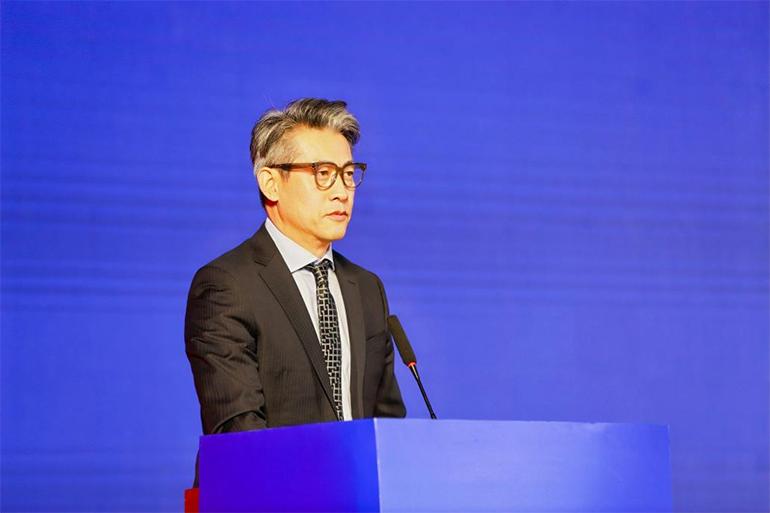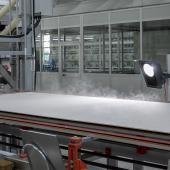China’s tile industry and market continue to decline
In 2024, the Chinese ceramic tile fell by 12% to 5.91 billion sqm, representing just 48% of the installed production capacity. The exit from the market of less solid and efficient companies is intensifying.
In 2024, the Chinese ceramic tile industry experienced a decline in production for the third consecutive year, a negative trend triggered by the 2021 property crisis and the consequent slump in domestic consumption, further compounded by the now decade-long fall in exports.
Figures from the China Building and Sanitary Ceramics Association reveal that domestic tile production dropped to 5.91 billion sqm in 2024, down 12.1% from 6.7 billion sqm in 2023. This decline continued despite the country’s enormous installed capacity of 12.21 billion sqm, much of it subject to increasingly long production stoppages during the year or entire lines left idle. The consequences of this enormous overcapacity include fiercer price competition, shrinking company profitability, an increase in the number of loss-making firms and the exit of weaker players from the market.
Most Chinese analysts agree that the industry has not yet reached the bottom of its downward curve and faces at least three more years of contraction, with inevitable repercussions for the sector’s structure.
An increasingly concentrated industry
A detailed survey conducted last year by Ceramic Information Network (taocixinxi.cn) offers a detailed picture of the sector and the impact that the past three years of crisis has had on companies.
Presented on 26 December at the 14th Ceramic Conference in Foshan, the study found 938 tile and slab manufacturers operating in 2024 with 2,193 production lines. Compared to 2022, this represents a reduction of 102 companies (-9.8%) and 292 lines (-11.7%). Total capacity, however, dropped by just 2.8% to 12.2 billion sqm due to the tendency to replace existing lines with higher-productivity plants.
As a result of the growing number of M&As, capacity is increasingly concentrated within major groups with outputs of more than 100 million sqm/year.
The regions with the largest installed capacity are Guangdong, Jiangxi, Fujian, Guangxi, Shandong, Sichuan, Henan, Hebei, Hubei and Liaoning, in that order. The survey also analysed the degree of conversion to natural gas, revealing sharp regional disparities. While 57.9% of companies nationwide (543) already use natural gas, the regional rates range from 4.5% in Guangxi and 13.4% in Jiangxi to 74.6% in Fujian, 85.3% in Guangdong and 96-98% in Shandong and Sichuan.

Transforming the business model: from factory to consumer
The process of rationalisation in the Chinese ceramic industry is certainly not a new phenomenon. In 2017, there were 1,366 tile manufacturers operating with a total of 3,264 production lines, while three years earlier the figures were even higher: 1,452 companies with 3,600 lines!
What has changed are the reasons behind the sector’s contraction. Whereas between 2017 and 2022 the causes were political in nature (the most polluting and least productive factories were closed down due to stricter environmental regulations and entire manufacturing hubs transferred to less urbanised areas), in recent years they have been linked exclusively to the market crisis.
As is always the case in highly competitive industrial systems, this process of natural selection rewards the most efficient players in terms of production and management, in other words those that are quickest to adapt their business models to radical changes in scenario and are most flexible in modifying their product ranges to new market demands.
Today’s markets – in China as in the rest of the world – are looking for quality, reliability and service, in other words smaller volumes of more innovative, customised, sustainable and higher-performance products.

The fact that the “winter of the Chinese ceramic industry”, as local media describe it, is still in its early stages was underlined by Gong Wei, Secretary-General of the China Building and Sanitary Ceramics Association, at the 14th Ceramic Conference.
“Over the next three to four years, we will see an even more rapid transformation of companies’ production models,” he said. “Output and sales will continue to decline, while competition will cause companies to exit the market at an even faster pace.”
This means that companies must adopt a long-term vision and shift their focus from the factory to the consumer, from volume to value, from price wars to innovation in products, channels and services.
“This severe crisis is already forcing companies to change, with results that are plain to see: the companies that are most committed to innovation and quality are continuing to grow despite the adverse situation,” he added.
Company size and financial strength will obviously play a crucial role in this transformation, as will flexible, versatile production models that guarantee efficiency and economic sustainability even with small batches, simultaneous production of multiple items and rapid product changeovers.
Did you find this article useful?
Join the CWW community to receive the most important news from the global ceramic industry every two weeks























